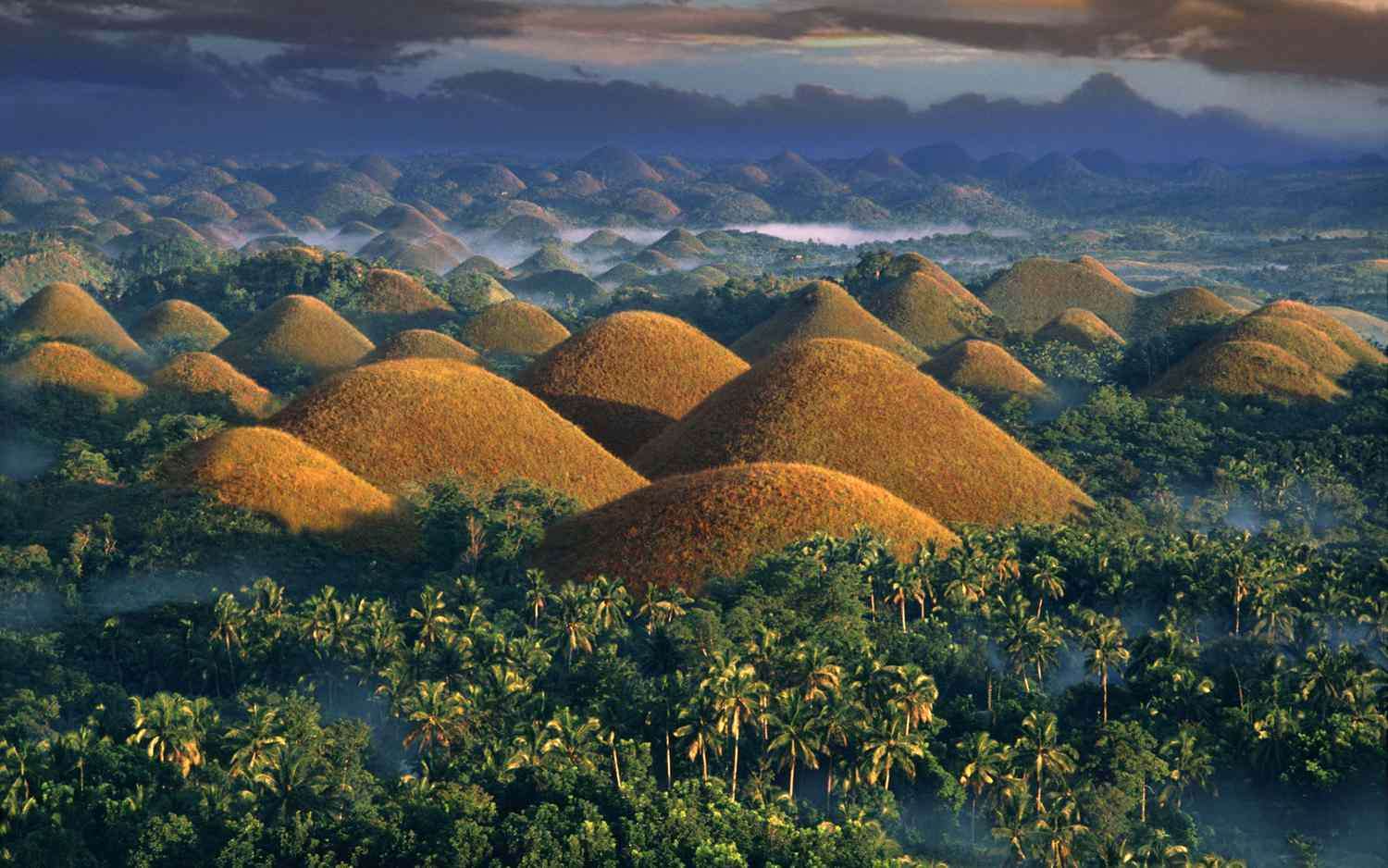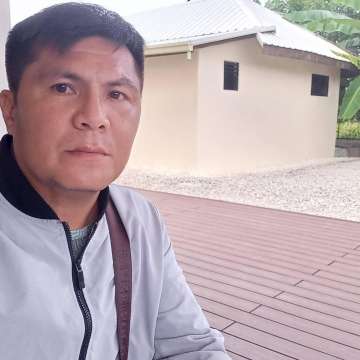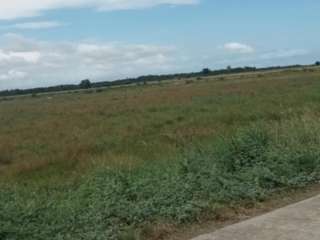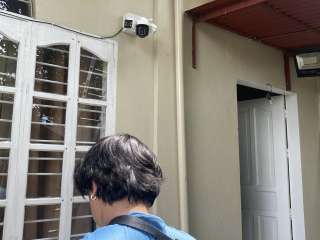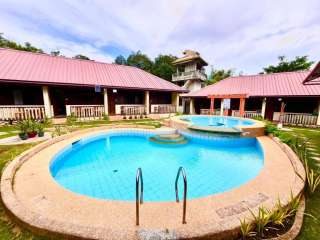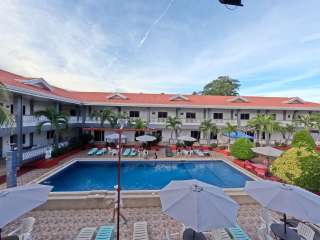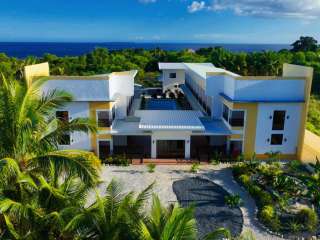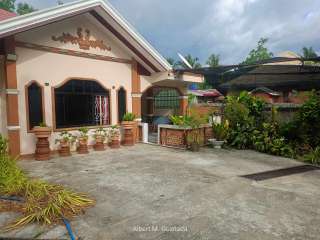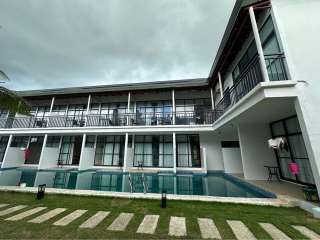About bohol
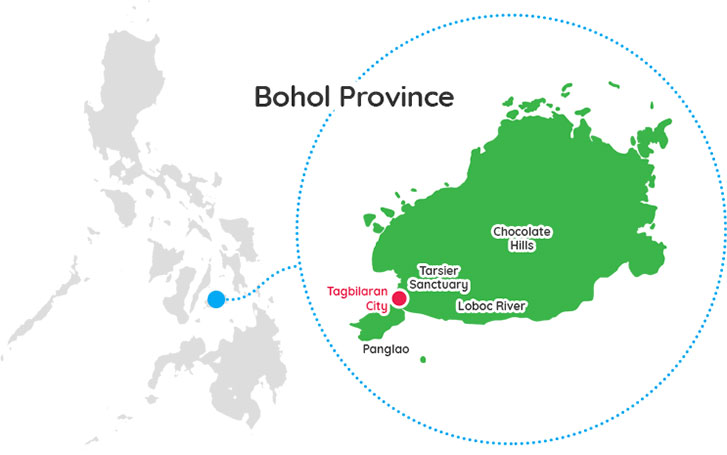
Bohol, is an island province of the Philippines located in the Central Visayas region, consisting of the island itself and 75 minor surrounding islands. Its capital is Tagbilaran. With a land area of 4,821 km2 (1,861 sq mi) and a coastline 261 km (162 mi) long, Bohol is the tenth largest island of the Philippines.
The province of Bohol is a first-class province divided into 3 congressional districts, comprising 1 component city and 47 municipalities. It has 1,109 barangays.
The province is a popular tourist destination with its beaches and resorts. The Chocolate Hills, numerous mounds of brown-colored limestone formations, are the most popular attraction. The formations can be seen by land (climbing the highest point) or by air via ultralight air tours. Panglao Island, located just southwest of Tagbilaran, is famous for its diving locations and is routinely listed as one of the top ten diving locations in the world. Numerous tourist resorts and dive centers dot the southern beaches. The Philippine tarsier, among the world's smallest primates, is indigenous to the island.
It was the home province of Carlos P. Garcia, the eighth president of the Republic of the Philippines (1957–1961) who was born in Talibon, Bohol.
On October 15, 2013, Bohol was devastated by a 7.2 magnitude earthquake whose epicenter was 6 km (3.7 mi) south of Sagbayan. The earthquake, which also hit southern Cebu, claimed 222 lives altogether and injured 374 people. It also destroyed or damaged a number of Bohol's heritage churches.
In 2023, Bohol Island was designated as a UNESCO Global Geopark, the first in the Philippines.
Bohol is also the province with the most towns in the Philippines, totalling 47 towns, and 1 component city, Tagbilaran City.
Bohol is accordingly derived from the local word bo-ol, a kind of tree that flourished on the island. Similar to Nahuatl, the h in the middle was used to transcribe a glottal stop which is a common phoneme in the languages of the Philippines. The original name survives as Bool, a barangay or village in Tagbilaran City where Miguel Lopez de Legazpi supposedly landed
History
In 1667, Father Francisco Combes, in his Historia de Mindanao, mentioned that at one time in their history, the people of the Panglao invaded Bohol and subsequently imposed their economic and political dominance in the area. They considered the previous inhabitants of the islands as their slaves by reason of war, as witnessed for example by how Datu Pagbuaya, one of the rulers of Panglao, considered Datu Sikatuna as his vassal and relative. The invasion of Bohol by the people of Panglao ushered the Kedatuan of Bohol. The kedatuan prospered under the reign of the two brother rulers of Panglao - Datu Dailisan and Datu Pagbuaya, with trade links established with neighbouring Southeast Asian countries, particularly with the Sultanate of Ternate. The flourishing of trade is owed to its strategic location along the busy trading channels of Cebu and Butuan. For other countries such as Ternate to gain access to the busy trade ports of the Visayas, they need to first forge diplomatic ties with the Bohol "kingdom".
Relations between the Sultanate of Ternate and the province of Bohol soured when the Ternatan sultan learned the sad fate of his emissary and his men who were executed by the two ruling chieftains of Bohol as punishment for abusing one of the concubines. Thus, in 1563, the Ternatans attacked Bohol. Twenty joangas deceitfully posing as traders were sent by the sultan of Ternate to attack Bohol. Caught unaware, the inhabitants of Bohol could not defend themselves against the Ternatan raiders who were also equipped with sophisticated firearms like muskets and arquebuses provided by the Portuguese, still unknown to Boholanos. Thousands of Boholanos lost their lives in this conflict, including Pagbuaya's brother Datu Dailisan. After the raid, Datu Pagbuaya, who was left as the sole reigning chief of the island, decided to abandon Bohol together with the rest of the freemen as they considered Bohol island unfortunate and accursed. They settled in the northern coast of the island of Mindanao, where they established the Dapitan settlement.
Bohol is derived from the word Bo-ho or Bo-ol. The island was the seat of the first international treaty of peace and unity between the native king Datu Sikatuna and Spanish conquistador Miguel López de Legazpi on March 16, 1565, through a blood compact alliance known today by many Filipinos as the Sandugo.
The earliest significant contact of the island with Spain occurred in 1565. On March 25 (March 16 in the Julian calendar), a Spanish explorer named Miguel López de Legazpi arrived in Bohol seeking spices and gold. After convincing the native chieftains that they were not Portuguese (who raided the islands of Mactan in 1521), Legazpi made a peace pact with Datu Sikatuna. This pact was signified with a sandugo (blood compact) between the two men. This event, simply called the Sandugo ("one blood"), is celebrated in Bohol every year during the Sandugo Festival. The Sandugo or blood compact is also depicted on Bohol's provincial flag and the Bohol provincial seal.
Two significant revolts occurred in Bohol during the Spanish Era. One was the Tamblot Uprising in 1621, led by Tamblot, a babaylan. This revolt met with reprisals from the Spanish forces in Cebu, who on January 6, 1635; under orders by Juan de Alcarazo the Alcalde-Mayor of Cebu, a force of 50 Spanish and 1,000 Visayan troops, battled the rebels and settled in Bohol.
The other was the famous Dagohoy Rebellion, considered the longest in Philippine history. This rebellion was led by Francisco Dagohoy, also known as Francisco Sendrijas, from 1744 to 1829.
Politically, Bohol was administered as part of Cebu Province. It was separated from Cebu on July 22, 1854, together with Siquijor. A census in 1879 found Bohol with a population of 253,103 distributed among 34 municipalities.
The culture of the Boholanos was influenced by Spain and Mexico during colonization. Many traditional dances, music, dishes and other aspects of the culture have considerable Hispanic influence.
After the United States defeated Spain in the Spanish–American War, the U.S. bought the entire Philippine islands. However, under the newly proclaimed independent government established by Gen. Emilio Aguinaldo, which was not recognized by the U.S., Bohol was governed as a Gobierno de Canton.
During the resulting Philippine–American War, American troops peacefully took over the island in March 1899. However, in January 1901, Pedro Sanson led 2,000 in rebellion, due to the harsh treatment imparted by these troops and the destruction they caused. General Hughes led a campaign of repression in October 1901, destroying a number of towns, and threatening in December 1901 to burn Tagbilaran if the rebels did not surrender. Pantaleon E. del Rosario then negotiated the rebel to surrender. At about the same period, on October 20, 1901, Bohol was organized as a province under the provisions of the Provincial Government Act of the Philippine Commission. Two years later, some of its towns were consolidated reducing its 35 municipalities to 32.
Members from bohol
Listings in bohol
More Provinces

biliran
Biliran is one of the country's smallest and newest provinces. Formerly a sub-province of Leyte, it became an independent province in 1992. Biliran lies less than a kilometer north of the island of Leyte. A bridge-causeway fixed link over Poro Island in the gateway town of Biliran connects the province ...read more
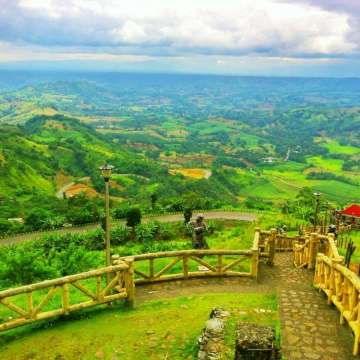
bukidnon
Bukidnon is a landlocked province in the Philippines located in the Northern Mindanao region. It is the third largest province in the country in terms of total area of jurisdiction behind Palawan and Isabela respectively. The name "Bukidnon" means "highlander" or "mountain dweller." Occupying a wide plateau in the north ...read more

